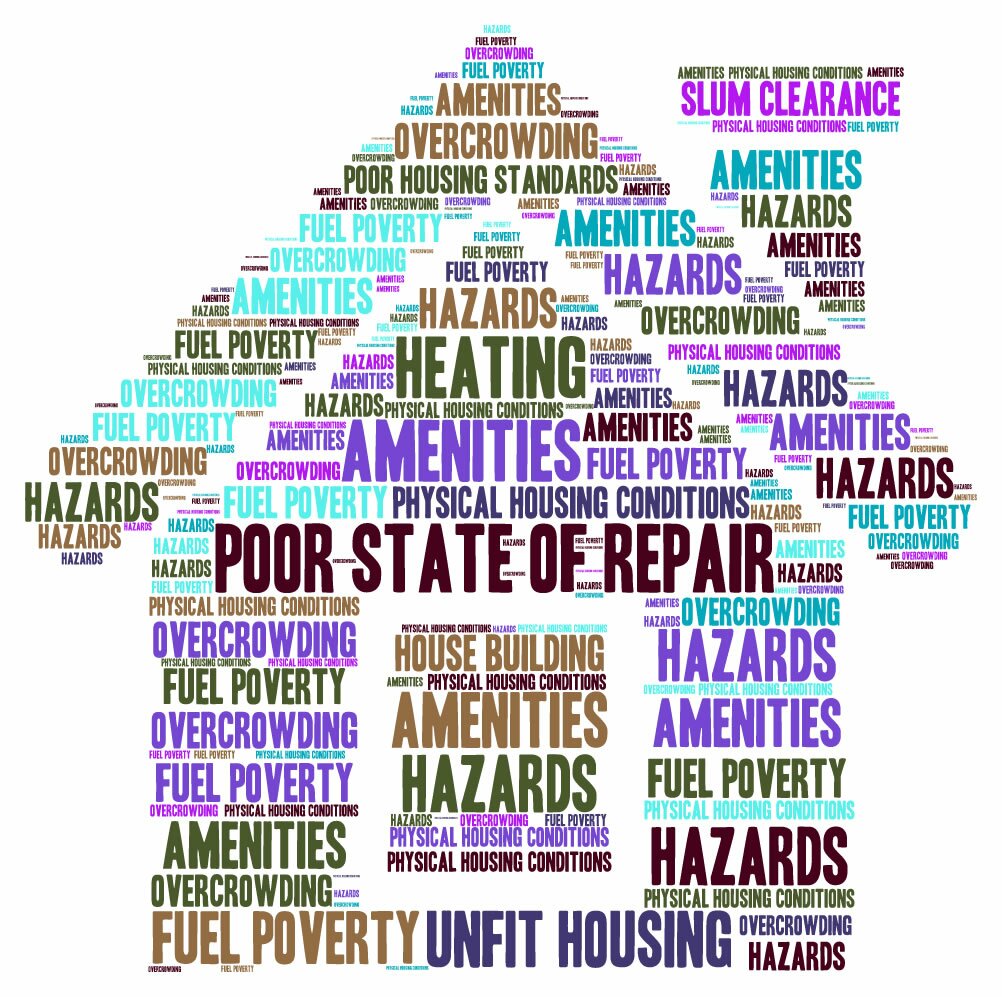Physical health Mental health & wellbeing Community & place Case studies
Understanding the inter-relationship between housing, poor health and wellbeing is essential to shape local policy responses that tackle both poor housing conditions/characteristics and health inequalities. It is vital that local stakeholders commissioning and delivering housing interventions do so with both an eye to the health implications of their proposed actions, as well as the opportunities to tackle poor health outcomes which such initiatives might offer up. Equally important is that local healthcare and social care commissioners and providers recognise how the home environment and housing circumstances of their patients and customers can determine their health and wellbeing, and the effectiveness of healthcare and social care interventions.
Housing is about more than just bricks and mortar. Our home environment is equally important in enabling access to other health improving opportunities, for example employment, social networks, essential services and amenities such as green space.
Health outcomes and physical housing characteristics/conditions
Conventionally, housing interventions have sought to deliver direct or indirect health benefits through various policy
programmes and initiatives designed to tackle (a) poor physical housing conditions (such as unfitness and state of repair); (b) the absence of key housing facilities (e.g. amenities, heating); (c) poor housing standards and the presence of hazards (to reduce accidents); and (d) overcrowding.
Significant progress at both a national and local level has been made over time to address many of these ‘physical’ housing issues through house building and slum clearance programmes, the provision of housing grants, legislation and statutory intervention/regulation. Housing poverty in the form of material deprivation however remains a persistent issue within certain localities and communities. Aspects of good practice identified within the case studies presented within this toolkit provide further testament to the persistence of physical housing causes of, and potential solutions to, addressing health inequalities.
Housing, mental health and wellbeing
The housing conditions that we experience have a fundamental impact upon our mental health and wellbeing. Living in such conditions places emotional stress upon individuals both in terms of feeling for responsible for, and attempting to overcome, the causes and consequences of such physical circumstances. Many people who have experience of extreme housing need such as homelessness have suffered from mental health issues both prior to, and during, their time living rough or in temporary forms of accommodation. But housing can impact upon the mental health and wellbeing in many different ways.
 Living in overcrowded conditions places strains upon personal and family relationships: it has been shown to directly contribute to relationship and family breakdown, in itself generating a range of needs around housing, income, employment, etc. Lack of security of tenure, housing affordability and the constant struggle that many individuals and households face in meeting mortgage or rent payments places further pressure on people – and consequently can lead to poor mental health outcomes.
Living in overcrowded conditions places strains upon personal and family relationships: it has been shown to directly contribute to relationship and family breakdown, in itself generating a range of needs around housing, income, employment, etc. Lack of security of tenure, housing affordability and the constant struggle that many individuals and households face in meeting mortgage or rent payments places further pressure on people – and consequently can lead to poor mental health outcomes.
We equally hope that our accommodation will provide us with a place of refuge and security. However for many individuals, the nature and location of their housing exposes them to higher levels of risk in relation to crime and fear of crime. Despite the fall in the level of many types of criminal offence since 2000, victimisation remains concentrated within certain types of households and housing tenures – and in some instances the risk of crime for these groups and communities is actually increasing.
Housing also shapes our social status and sense of inclusion within our immediate neighbourhood and wider society. Maintaining both our sense of self worth and our opportunity to interact with other individuals and social activities is an important factor in sustaining our mental health and wellbeing. Housing therefore plays an important role in both addressing the underlying causes of pathways into poor mental health, as well as a means to support individuals with mental health issues during crisis and in their recovery.
Housing as a gateway: location
The location of our home can influence access to healthcare, education, employment, transport, social care and more. People with sufficient income are able to overcome these symptoms of place poverty, perhaps by securing services privately or simply choosing to move elsewhere. For others, their current and future housing options are shaped by adverse financial and personal circumstances rather than individual choice. Ideally where you live should not shape your ability to access services of sufficient quantity and quality but there is plenty of empirical evidence to demonstrate that the postcode lottery is still alive and well in the United Kingdom: personal outcomes and opportunities are shaped as much by where we live as by who we are. Local public service organisations with strategic and/or service delivery responsibilities therefore need to move beyond simply seeing housing, and the potential needs that arise from it, simply through the lens of physical housing conditions and consider the role it plays in enabling people to achieve good health and wellbeing, and a good quality of life.

